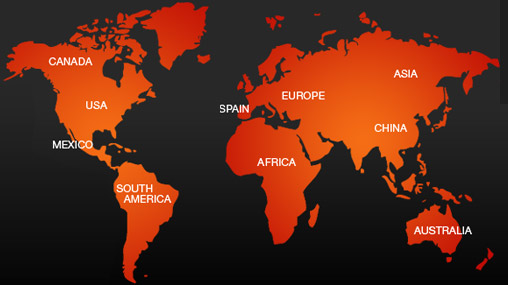- Home About RM Minerals
- Virtual Photo Museum Blog RM Contact
- Microscopy and instruments How to Buy Disclaimer
Copyright 2010-2025
www.rosellminerals.com



Group of Rhodochrosite crystals with a uniform pink color, with well-defined scalenohedron shapes and good gemmy transparence. They are accompanied by other smaller rhodo crystals. On a solid matrix with hyaline quartz crystals with inclusions and manganese oxides.
We have labeled this specimen as fluorite, because it highlights a group of crystals of this species, transparent to translucent, with complex facets of the dodecahedron, with faces with polysynthetic growths. They are disposed in a vug of bright rhodo crystals and intense pink. A second generation of rhodo forms globules of honey tone. A very curious and aesthetic Mina Uchucchacuapiece.
Kasolite is one of my favorite species. In this sample (from Dr. Viñals, Barcelona) we can enjoy several vugs with lanceolated kasolite crystals. With the orange color, some transparent and isolated, some forming aggregates. Contarsting on the green matrix.
These specimens were found in a outcrop close to Maria Magdalena mine, close to the beautiful town of Ulldemolins (Tarragona, Catalonia). Probably, these crystals are the most defined crystals of Čechite worldwide. They are brilliant, black color and show a tabular shape defined by different order orthorhombic prisms and pinacoidal faces. Disposed very aerial on a fluorite matrix.
Čechite is very rare lead iron vanadate that is only found in a few places in the world and it is the first citation in the Iberian peninsula.
SEM-EDS and EPMA analysis show that, in some cases, on the crystal surface there is Cu2+ has been formed but the crystal is pure PbFe2+(VO4)(OH). In most specimens (all) from other localities the presence of manganese is important, but these specimens are Mn free. We will send more details to the buyer.
On a sandstone matrix some yellow crusts of coconinoite formed by small tabular to micaceous crystals. This sample has been analyzed by SEM-EDS and we will send the results to the buyer.
An aesthetic native copper of good size and very aerial, which shows an arborescent growth formed by flattened crystals. It is partially coated with copper salt species, together with cuprite. A very displayable piece.
An aesthetic native copper of good size and very aerial, which shows an arborescent growth formed by flattened crystals. It is partially coated with copper salt species, together with cuprite. A very displayable piece.
This specimen shows an arborescent growth with deformed crystalline forms and other idiomorphic in some areas of the specimen, with well defined faces and edges. With good color and brightness which is not very frequent. With small quartz crystals.
Nowadays, graphite specimens from this classic Asturian locality are very difficult to be found. These specimens show contiguous columns, with greasy luster and defined hexagonal forms. The crystal habit of natural graphite in most cases is determined by its highly anisotropic, layered structure. However, anomalous habits of graphite,determined not only by its structure, but also by the peculiarities of the growth environment, are frequently encountered, and optimization of the space available when solidifying forming columns.
Nowadays, graphite specimens from this classic Asturian locality are very difficult to be found. These specimens show contiguous columns, with greasy luster and defined hexagonal forms. The crystal habit of natural graphite in most cases is determined by its highly anisotropic, layered structure. However, anomalous habits of graphite,determined not only by its structure, but also by the peculiarities of the growth environment, are frequently encountered, and optimization of the space available when solidifying forming columns.
Nowadays, graphite specimens from this classic Asturian locality are very difficult to be found. These specimens show contiguous columns, with greasy luster and defined hexagonal forms. The crystal habit of natural graphite in most cases is determined by its highly anisotropic, layered structure. However, anomalous habits of graphite,determined not only by its structure, but also by the peculiarities of the growth environment, are frequently encountered, and optimization of the space available when solidifying forming columns.
Nowadays, graphite specimens from this classic Asturian locality are very difficult to be found. These specimens show contiguous columns, with greasy luster and defined hexagonal forms. The crystal habit of natural graphite in most cases is determined by its highly anisotropic, layered structure. However, anomalous habits of graphite,determined not only by its structure, but also by the peculiarities of the growth environment, are frequently encountered, and optimization of the space available when solidifying forming columns.
These samples of heterosite come from a classic area for the Catalan mineralogy such as Cap de Creus, in Girona. They belong from a former collection and were collected, according to the owners, by the 70s of the last century. Currently, in the Cap de Creus area, it is strictly forbidden to collect absolutely anything. These samples show aggregates of brownish-black tones, with a certain brightness, with layers of violet color and embeded in a pegmatitic matrix. No acid applied.
Bareche, in his work "Els Minerals de Catalunya, Segle XX" (2005), indicated the presence in this area of several rare Mn and Fe phosphates. He indicated that the purpurite was found in a single outcrop as small masses of violet and brownish color, along with heterosite from brown to black. From these specimens, several fragments of violet tone have been analyzed. The results have indicated that iron is predominant, with a ratio Fe:Mn, 2:1, consistent with heterosite. We do not rule out that purpurite (Mn> Fe) could be present, as member of heterosite-purpurite series.
These samples of heterosite come from a classic area for the Catalan mineralogy such as Cap de Creus, in Girona. They belong from a former collection and were collected, according to the owners, by the 70s of the last century. Currently, in the Cap de Creus area, it is strictly forbidden to collect absolutely anything. These samples show aggregates of brownish-black tones, with a certain brightness, with layers of violet color and embeded in a pegmatitic matrix. No acid applied.
Bareche, in his work "Els Minerals de Catalunya, Segle XX" (2005), indicated the presence in this area of several rare Mn and Fe phosphates. He indicated that the purpurite was found in a single outcrop as small masses of violet color, along with heterosite from brown to black. From these specimens, several fragments of violet and brownish tone have been analyzed. The results have indicated that iron is predominant, with a ratio Fe:Mn, 2:1, consistent with heterosite. We do not rule out that purpurite (Mn> Fe) could be present, as member of heterosite-purpurite series.
Excellent specimen formed by a polysynthetic growth of hematite crystals, with an exceptional brightness. Rich in faces, defined edges and a good size for the species and the locality.
Rob Lavinsky said: "Splendent, complex hematite crystals form a striking specimen from this less well-known Brazilian locale. The majestic, large crystal, with numerous amazing faces is 3.5 cm and is nearly pristine. This fine piece is complete-all-around. Choice and uncommon material from the Larry Krause dealer stock". [go to mindat]
Rich group of wulfenite crystals, bright, slightly color from yellow to orange. Crystallized in both sides. Most are intact, something unusual in the specimens of this site. From the former collection of J.M. Manchion.
Tetrahedrite crystals of this Asturian mine are well known and appreciated by Spanish mineral collectors. In this specimen we have several tetrahedral crystals, also tristetrahedron shape could be appreciated. Good size and partially coated by malachite. A Spanish classic.
Aesthetic specimen formed by numerous isolated wendwilsonite crystals of good size, very well defined, some of them doubly terminated, with an intense and reddish tone. Some of them partially covered by a whitish patina only on certain faces, selectively. They are disposed on a matrix with calcite and dolomite crystals.
A group of fluorite crystals those, at first glance, seem just octahedra, but if you take a look carefully you will see complex terminations. Green color and dull luster. Acompanied by small quartz crystals. A classic from the former Manchion (Barcelona) collection, collected by himself in January, 1986.
Rich group of spessartine crystals, well defined, with faces of the trapezohedron and dodecahedron. Transparent, gemmy and with the characteristic orange colour, on matrix.
Excellent gemmy anglesite specimen that shows a group of crystals with a razor-sharp chisel terminations, striated faces characteristic of the species, very sharp and with good transparency and uniform yellow color.
This specimen date to the late 1970s and were found in the well known Moroccan mining area of Touissit. They are considered the world's finest anglesite specimens. Here we offer this "old" specimen from glorious past times.
The matrix of this sample is defined by a druse of quartz crystals, between milky and hyaline, very well defined, short prism and brilliance. These crystals are peppered by various pyrite aggregates. What stands out, very aerial, is a group of barite tabular crystals, very bright, also dotted with small pyrite-marcasite crystals. An exceptional piece for display, excellent for this mine.
A first line arsenopyrite specimen from Panasqueira. It is a large group of prismatic lanceolate crystals of brilliant arsenopyrite, very defined, interpenetrated, with striated faces, ultimately: pure aesthetics. And to give it a touch of excellence we have a group of fluorapatite crystals, brilliant, transparent and with an uniform green tone. A more than worthy representative from this classic Portuguese mine.
A huge size group of interpenetrated crystals of hexagonal shape, with a dark gray metallic color and brilliant luster. Crystals of this specimen remind wurtzite for its complex hexagonal shape and dipyramids observed. Many similar samples from this mine has been classified as wurtzite. For this reason we heve proceeded to analyze them. The results indicate that this is a really amazing and interesting pseudomorphosis of sphalerite after wurtzite. A great opportunity for psedomorph and Bolivian mineral collectors.
Studies were carried on by X-ray diffraction of the matrix and hexagonal crystals. They have shown that it is sphalerite. Also, the Raman spectra shows that in the innermost areas of the crystals wurtzite presence has been detected, the rest is sphalerite. SEM-EDS yield a composition: (Zn1.05,Fe0.09)Σ=1.14S1.00.
Specimens of well developed wurtzite are unusual. This hexagonal zinc sulphide, with some iron, presents dimorphism with sphalerite. It is known that wurtzite is stable at high temperatures, low temperatures being the most stable phase sphalerite. This Bolivian mine is the type locality for the wurtzite. We will send the analysis reports to the specimen buyer.
